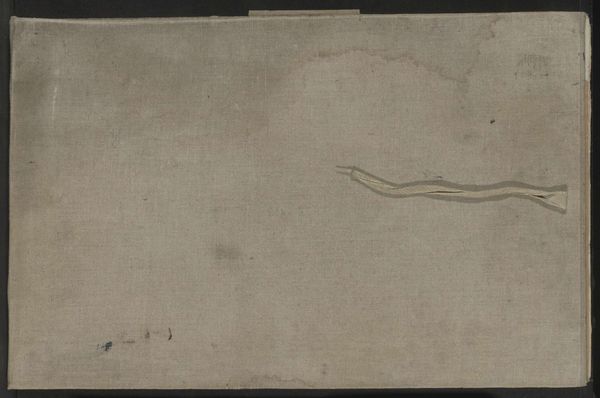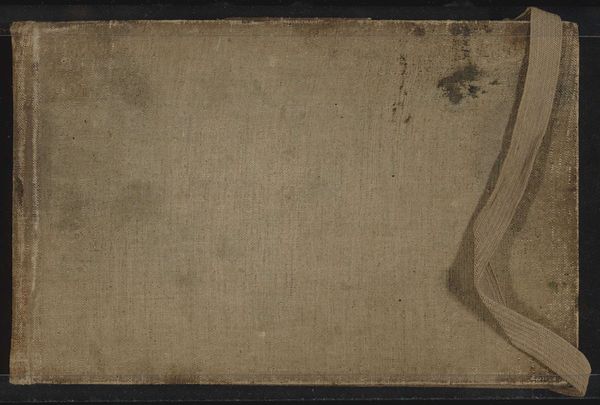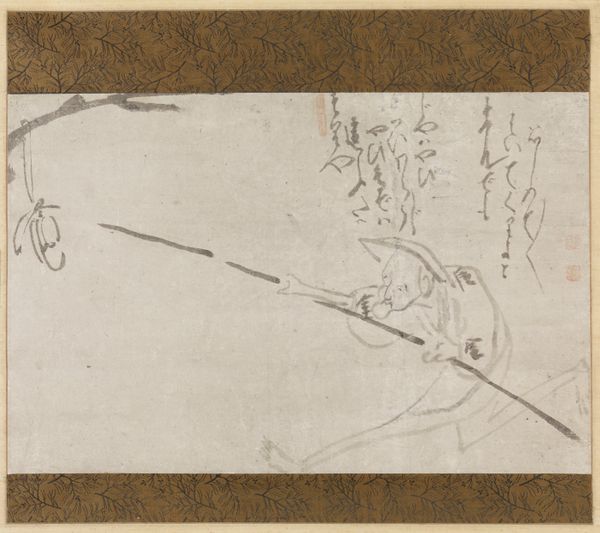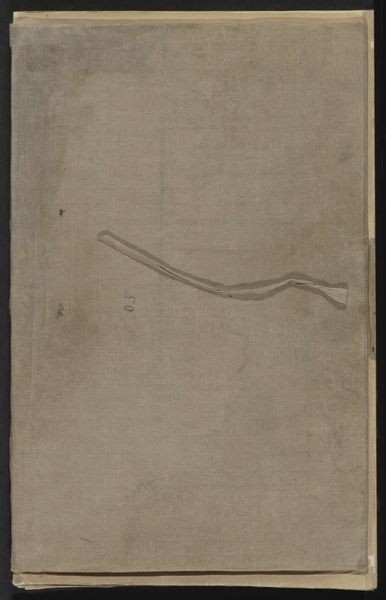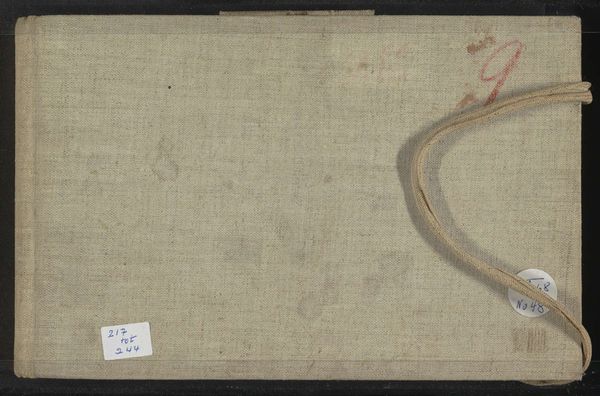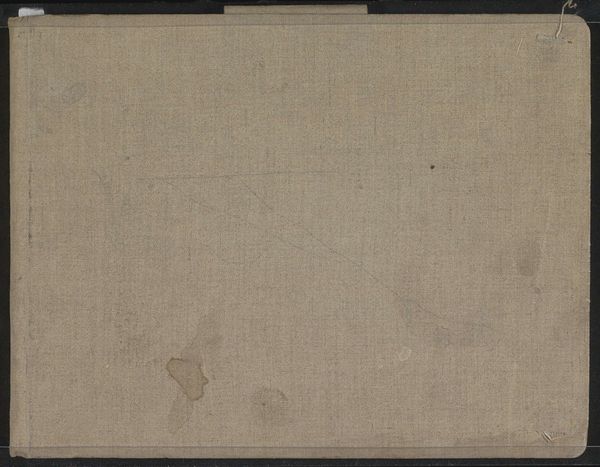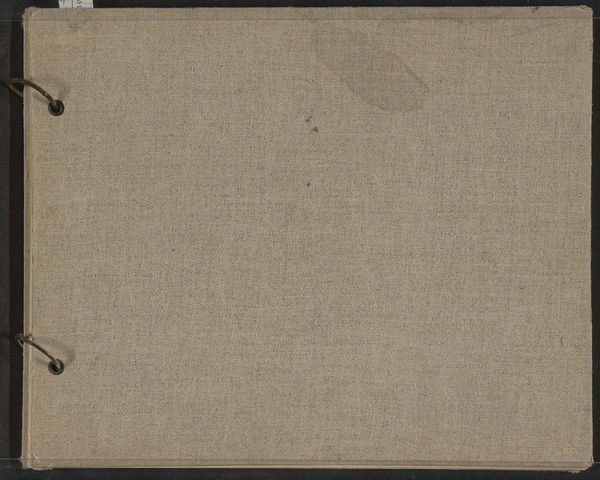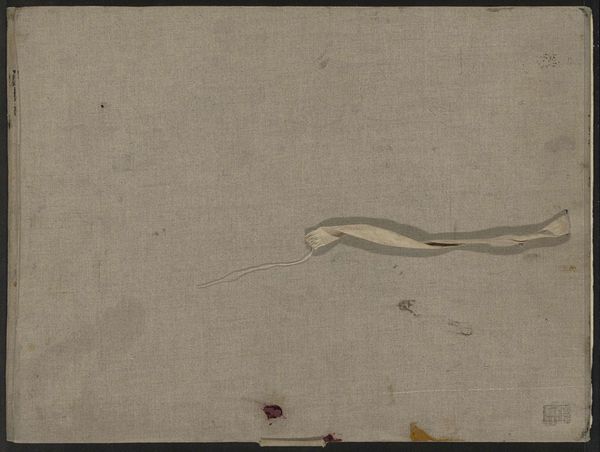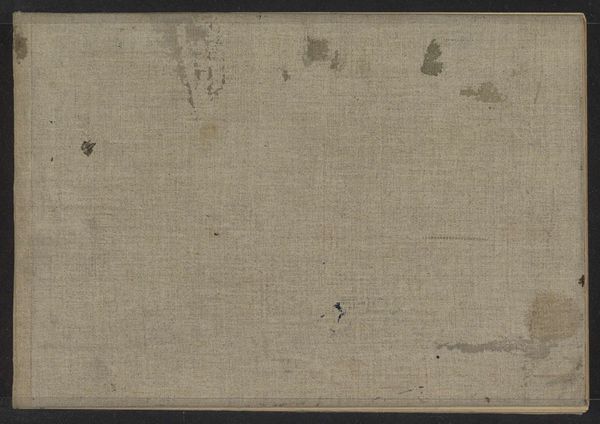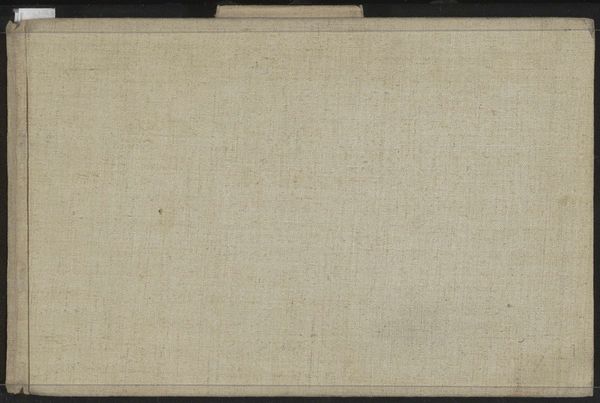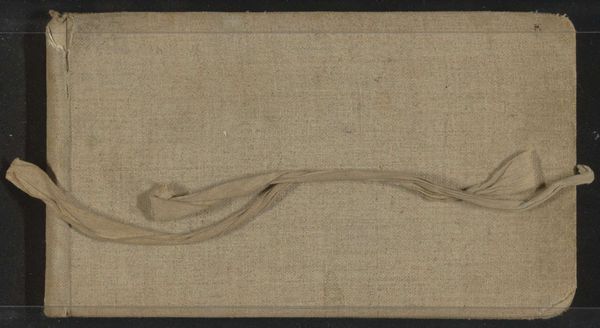
Dimensions: height 120 mm, width 202 mm, thickness 11 mm, width 408 mm
Copyright: Rijks Museum: Open Domain
Editor: So, this is "Sketchbook with 22 Pages," made around 1892 by Julie de Graag. It’s a pencil and colored pencil drawing on paper. The image we are looking at now shows the cover, and I’m struck by how simple and understated it is. The binding tie adds a delicate detail. What do you make of this? Curator: Precisely. Consider first the plane of the sketchbook cover itself. De Graag offers us a textured surface, drawing our attention to the material presence of the object. The subtle tonal variations achieved through graphite emphasize the physical reality of the paper. It is more than just a support; it becomes an integral part of the artwork. Editor: I see what you mean. It's almost as if the texture becomes a subject itself, not just a background for something else. What about the tie; how would you interpret that formally? Curator: Note the carefully considered placement of the tie. It's not merely functional; it serves as a compositional element, a sinuous line contrasting with the rigidity of the cover. The subtle shadow cast further enhances the three-dimensionality and integrates it into the overall visual experience. Semiotically, the tie could even signify closure and secrecy—containing untold artistic ideas. Editor: That's interesting; I hadn't thought about it that way. The idea of closure versus the potential of the blank pages inside. It makes me think of how artists use the sketchbook as a space for both planning and experimentation. Curator: Exactly. And the lettering "A.D.delaarag" perhaps refers to the maker and the “RP,” is that perhaps a museum initial? Editor: Yes! It could refer to ‘Rijksprentenkabinet' as its museum label indicates! The initials certainly add a layer, marking its entry into the museum's collection, the artwork has transitioned to a formal space. That actually influences my interpretation significantly now. Curator: Indeed. By focusing on form and materiality, we can uncover a complexity in even the simplest of images. The structure yields a rich set of visual cues. Editor: I will definitely observe for these details on my next visit! Thanks!
Comments
No comments
Be the first to comment and join the conversation on the ultimate creative platform.
